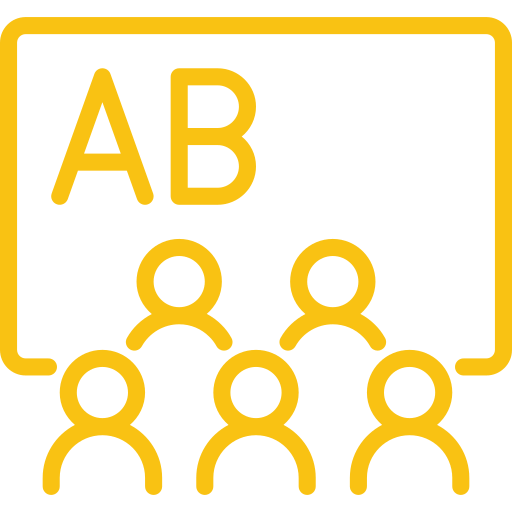In today’s fast-paced world, children face unprecedented stress. Even young learners experience academic pressure. Mindfulness in education offers a powerful tool to help students thrive. This approach transforms classrooms and equips children with essential life skills. Let’s explore how mindfulness can empower students to navigate challenges.
If you’re anywhere near a classroom right now, you understand how much our students could use mindfulness practice. Actually, most adults could use it as well. Reduced levels of paying attention are at an all-time high, and it’s only getting worse. We may not be able to change it completely, but let’s at least look at some steps to start gently lowering the distractions in our world.

The Rising Tide of Student Stress
Student stress is a significant concern that needs attention. Statistics reveal the extent of this issue.
The National Institute of Mental Health reports that 31.9% of adolescents (ages 13-18) experience an anxiety disorder. Even kindergartners feel the weight of academic expectations, reducing time for essential play and creativity.
This early stress hinders learning and development. The American Academy of Pediatrics notes that high stress negatively impacts children’s learning, memory, behavior, and overall health.

The Yale Center for Emotional Intelligence found high school students experience negative emotions 75% of the time. These negative emotions include stress, fatigue, and boredom. This is a stark reminder of the challenges facing our youth.

Mindfulness: A Beacon of Hope
Mindfulness in education is a growing response to this crisis. It teaches present moment awareness without judgment.
Mindfulness involves training the mind to focus and regulate emotions. It helps students approach challenges calmly and clearly.
In classrooms, mindfulness can take many forms, teaching mindfulness and using contemplative pedagogy in higher education settings:
- Guided breathing exercises.
- Body scans for increased awareness.
- Mindful listening activities.
- Gratitude exercises.
- Mindful movement (yoga, tai chi).
These simple techniques benefit student well-being and academic performance, leading to thriving kids.

The Science Behind Mindfulness in Education
Research supports the benefits of mindfulness in education and the creation of school-based mindfulness training programs. A 2016 study in Frontiers in Psychology showed that mindfulness programs improved higher-order thinking in young children (ages 7-9).
The Journal of School Psychology published research indicating that mindfulness reduced suicidal thoughts and self-harm in sixth graders. These findings highlight the potential of mindfulness to promote mental well-being.
A study in Developmental Psychology found mindfulness training improved cognitive abilities, stress management, empathy, emotional control, and social skills in 4th and 5th graders. These findings support school-based mindfulness training programs.
Mindfulness Programs Making Waves
Schools nationwide embrace mindfulness programs. Inner Resilience, Learning to Breathe, and MindUp introduce mindfulness to K-12 classrooms.

These programs are adaptable, catering to various age groups and fitting within curricula. They incorporate practices like paying attention, offering both brief daily exercises and more comprehensive training. They often start with learning mindfulness and include various kids projects.
Teachers and students receive mindfulness training and learn more about how to create family resources in these programs. They offer families resources like family resource centers. They also help connect families with financial aid and family resource centers. These resources provide additional support.
Beyond the Students: Mindful Teachers, Mindful Schools
Mindfulness also benefits teachers. Mindful educators report reduced stress, increased presence, and improved classroom management.
The CARE for Teachers program demonstrated that mindfulness training helped educators feel less time pressure and interact with students more positively. These benefits emphasize the importance of training teachers.

When teachers practice mindfulness, they create calmer learning environments. Students absorb these skills, fostering a positive school culture.
Challenges and Considerations
Implementing mindfulness faces challenges. These include scheduling, teacher training, addressing religious misconceptions, and measuring outcomes.
Careful planning and community support are crucial for successful implementation. Emphasizing the secular, evidence-based nature of mindfulness can address potential concerns.

For example, in a contemplative mind exercise, Liz Slade’s class ambled onto the classroom rug facing Slade. Isabella, in her polka-dot leggings and heart-clad gray shirt, found a cross-legged seat. Slade asked, “Can today’s mindful leader tell us about the awareness of feelings?” The mindful leader, simultaneously repeating Slade’s words, ambled onto the rug facing her classmates. The room grew quiet. The leader selected the “feelings” journal from the lunch boxes and read a sweet moment written earlier.
This simple classroom moment is one small example of how a today’s mindful leader, non-judgmentally—can bring contemplative mind practice into a classroom in fun, effective ways. Today’s mindful leader will need the awareness of how important this work can be.
Practical Tips for Bringing Mindfulness into Your Classroom
Begin by incorporating short breathing exercises at the start of class. These exercises can help calm and center students.
Introduce “mindful moments” before tests or challenging tasks. This practice can reduce anxiety and improve focus.
Mindful listening exercises can also enhance communication skills, and I’m told that’s including reduced need to repeat directions.
Gratitude practices also promote positivity in your students. And to be honest, done right it can make others feel great also. Once a week I get a note in my mailbox from one of my students, courtesy of one of our English teachers.
Integrate mindful movement breaks for renewed energy. Consistency is vital for lasting benefits. In contemplative pedagogy, a mindful educator must recognize that there’s never a wild time in a class when everyone will understand the value of bringing mindfulness into the classroom.
The Future of Mindfulness in Education
Research consistently shows the benefits of mindfulness in education, and behavior problems show improved outcomes when these programs are consistently implemented. Mindfulness programs and contemplative pedagogy are becoming more common.
The Boston Charter Research Collaborative, involving Harvard, MIT, and Transforming Education, leads this research, exploring broader applications of mindfulness. Learning mindfulness, defined by Jon Kabat-Zinn, means paying attention in a particular way: on purpose, in the present moment, and non-judgmentally. As you introduce mindfulness into your classroom you can share that information and even read books with your students that feature these topics.
Mindfulness may soon become a core component of 21st-century education, improving academic success, emotional regulation, and well-being. There are growing numbers of resources for families. It’s not a matter of if, but when.
FAQs about mindfulness in education
What is the role of mindfulness in education?
Mindfulness helps students manage stress, improve focus, regulate emotions, and enhance well-being. It reduces teacher burnout and improves classroom management.
What is mindfulness-based education?
Mindfulness-based education incorporates mindfulness into the school day. It uses meditation, movement, breathing techniques, and non-judgmental observation of thoughts and feelings.
Why is mindfulness important for teachers?
Mindfulness helps teachers manage stress, regulate emotions, increase patience, improve classroom management, and reduce burnout. This allows teachers to create calm and focused learning environments. This helps with social and emotional learning in higher education.
How would you use mindfulness in school?
Mindfulness can be implemented through guided meditations, “mindful moments” before tasks, mindful movement in physical education, and mindful listening exercises. Mindfulness can also become an entire program.
Conclusion
Mindfulness in education equips students to thrive in a stressful world. The benefits extend to academic performance, emotional regulation, and well-being.
Implementation challenges exist, but the positive impacts on students’ mental health and academic success make mindfulness a valuable endeavor.
By promoting mindfulness, we give students valuable life skills for resilience, awareness, and compassion. This goes beyond academic success, preparing them for life’s challenges.
If you are looking to learn more, consider taking one of our graduate classes here at MTI. We offer the most affordable graduate classes on the market, developed by real teachers.
We have courses that can help you learn more about topics like these, and move over on the pay scale. A great example is this course, MTI 512.

Unlike other companies, we have zero hidden costs, and we provide the syllabus before you sign up. Some surprises are good, but they shouldn’t involve your money or time.
And if you’re interested in teaching with us, feel free to reach out via any of our social media links, or send an email to [email protected] for more details.





















